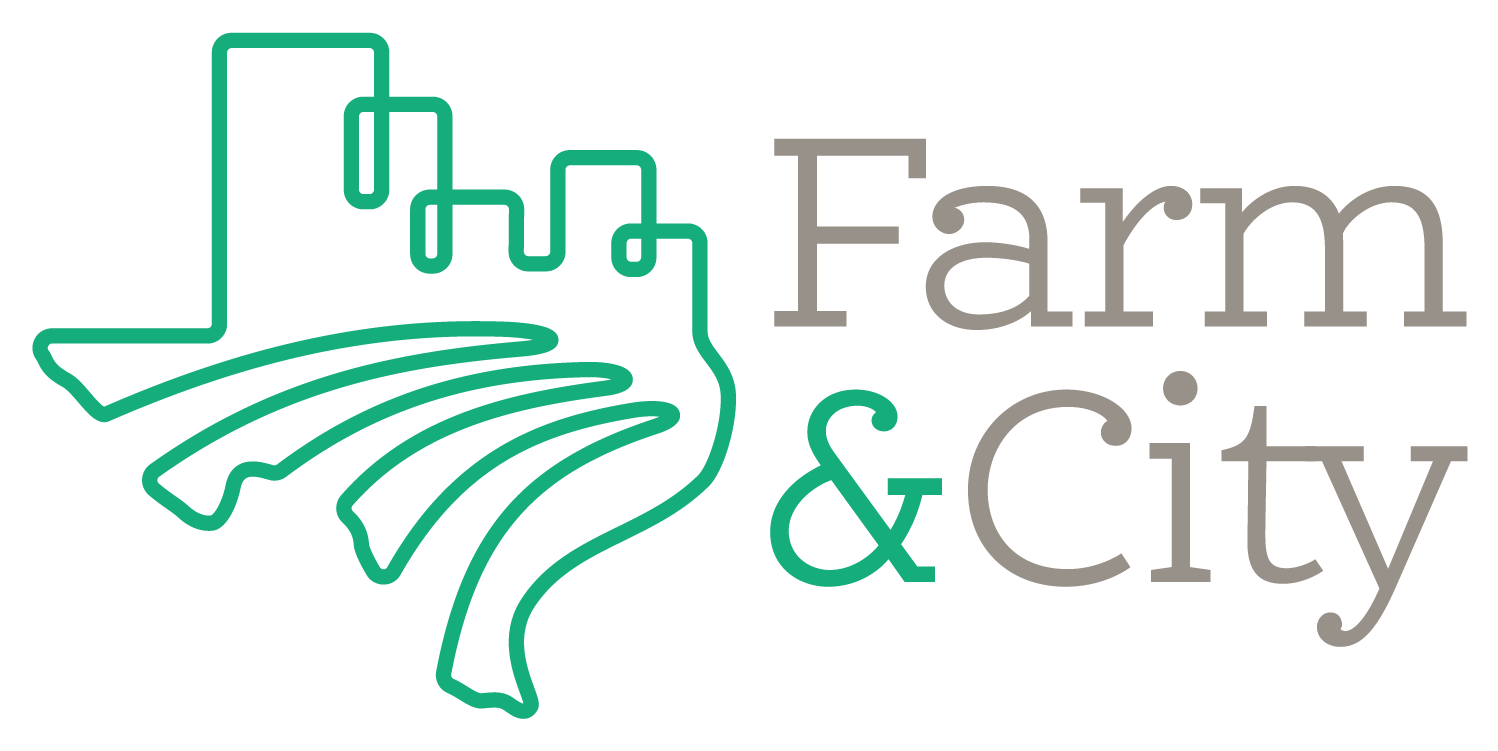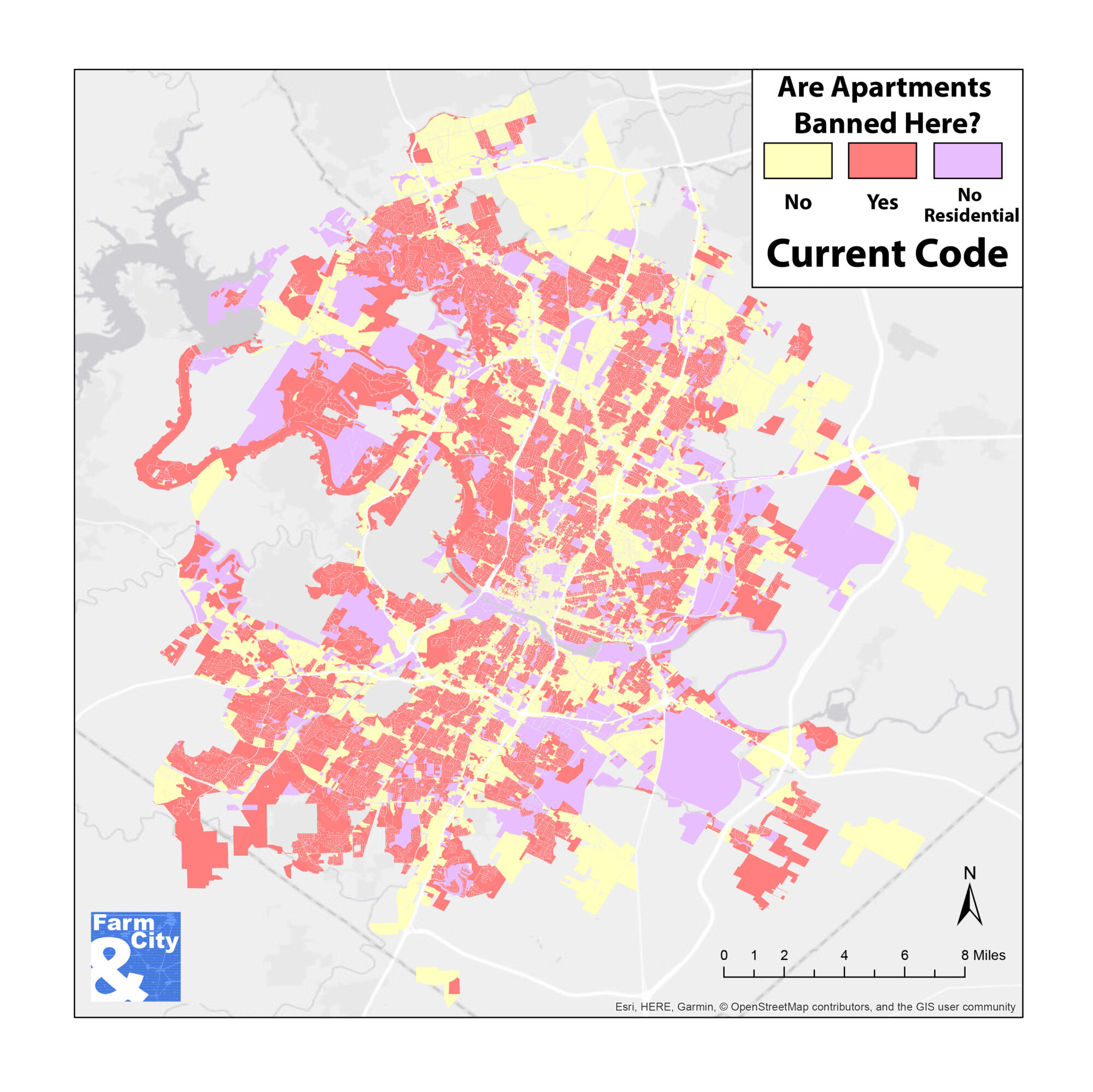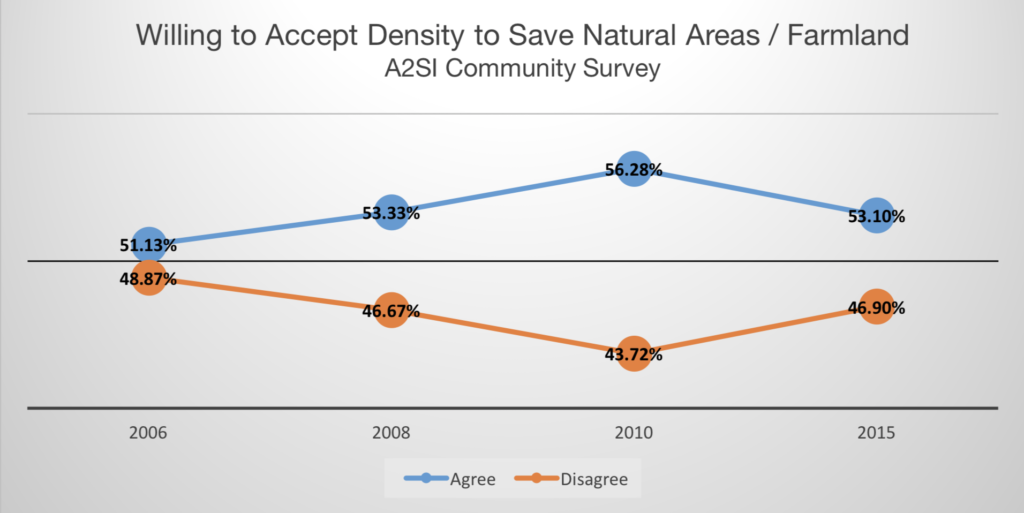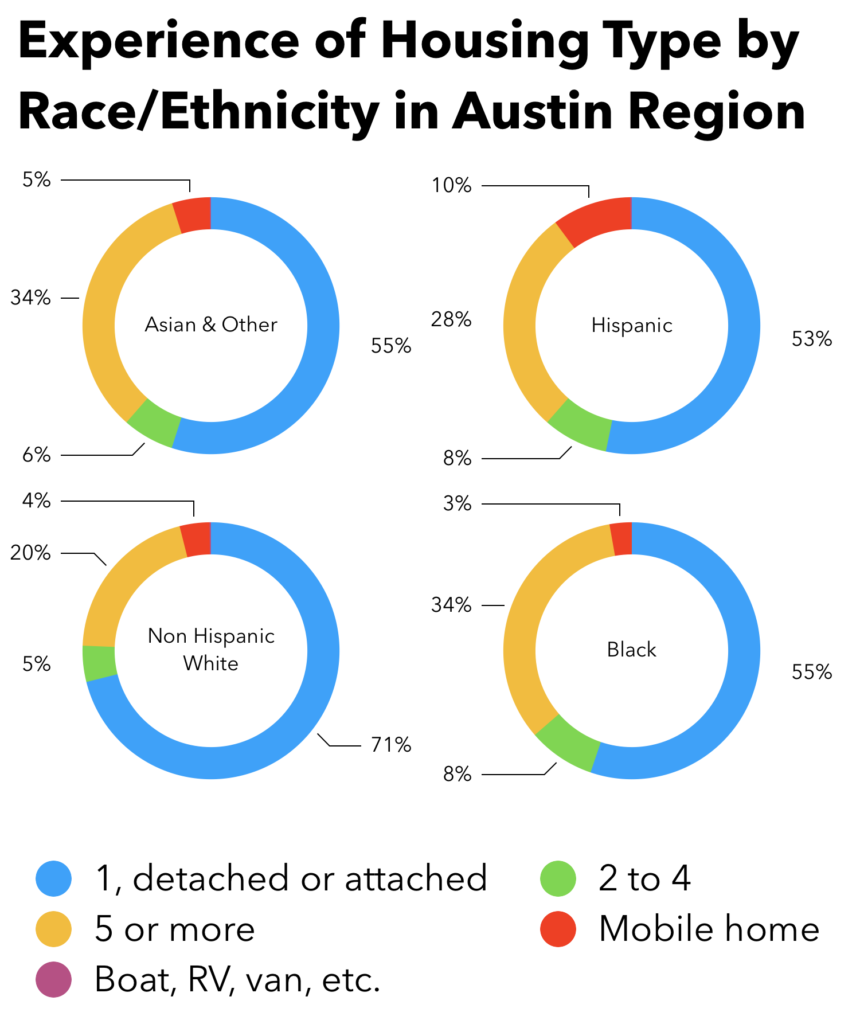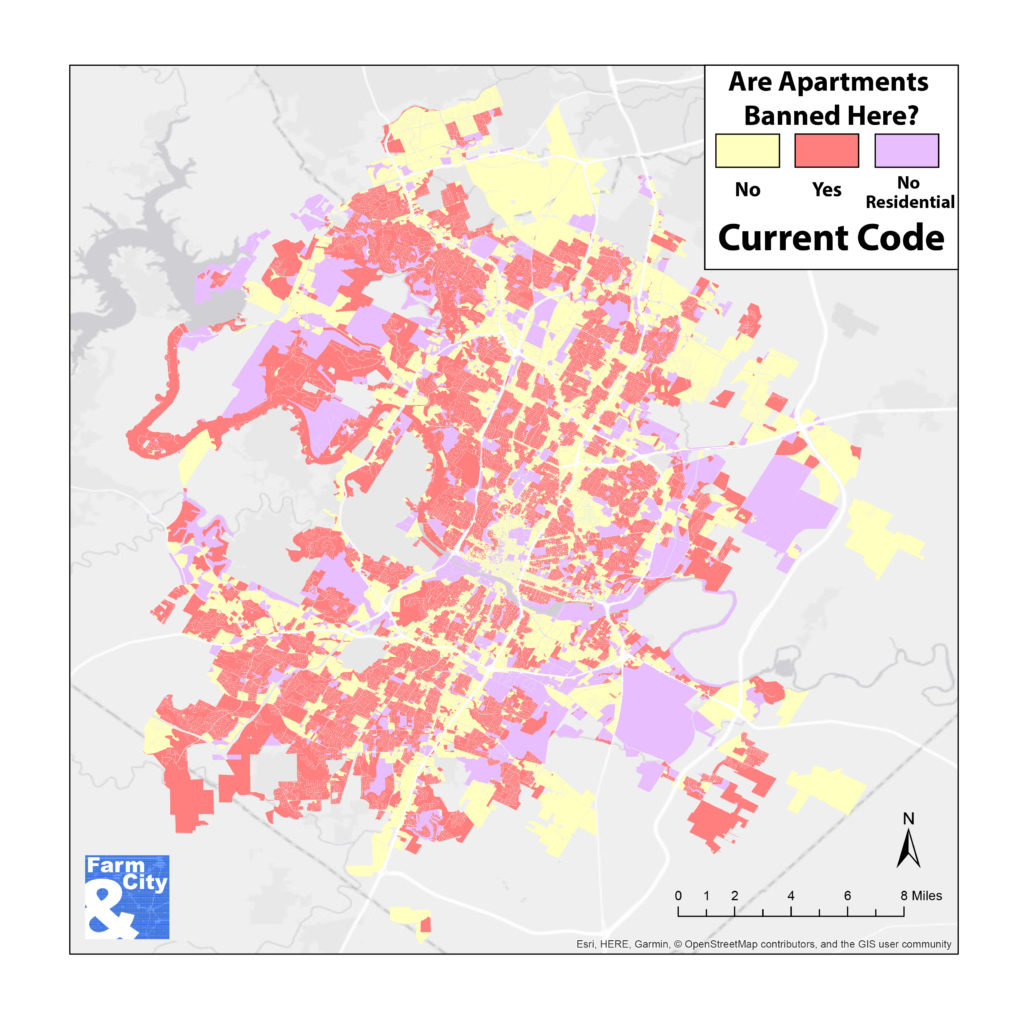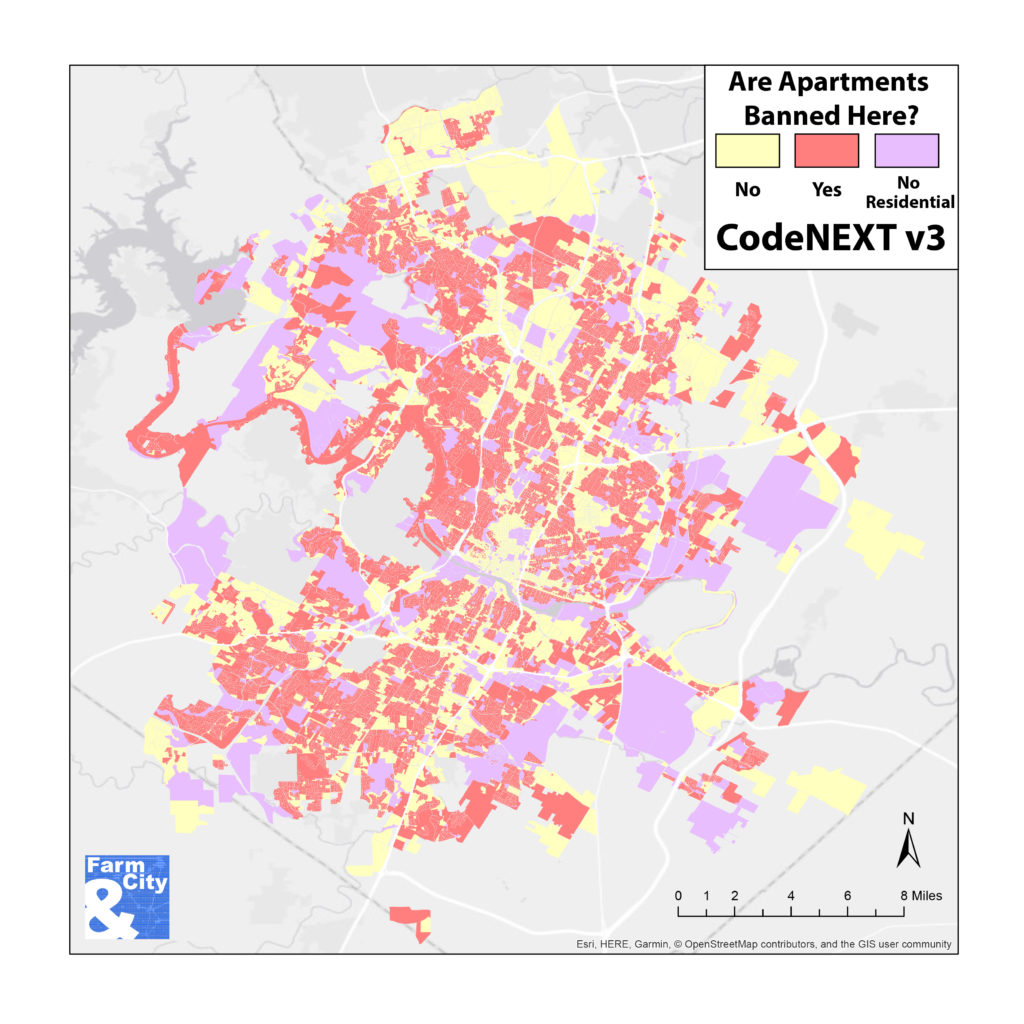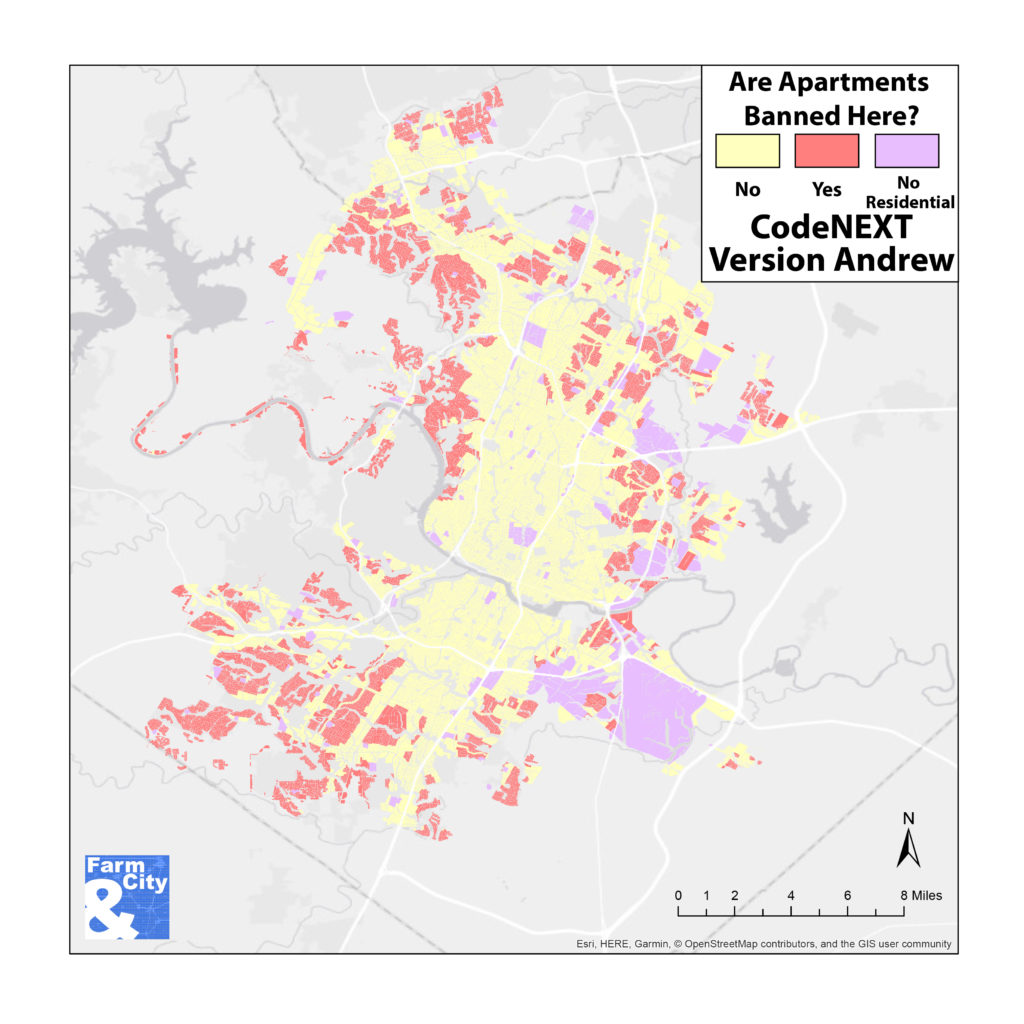In the City of Austin, 357,515 people live in housing that is not a single family home – 48% of the people living in apartments, duplexes, and condos in the Austin region. A minority of residents of the city are single family homeowners. Yet, the City of Austin is poised to maintain an odd public policy – an Apartment Ban across much of the city.
Demand for housing that offers healthy, low-carbon lifestyles far outweigh supply in all Texas metro areas, primarily because of the combined market perversions of exclusionary zoning and sprawl subsidies – such as road spending. Adding multifamily units in transit, bicycle, pedestrian accessible neighborhoods is essential to building a sustainable Texas for our expected 31 to 54 million Texans in 2050.
According to the Kinder Houston Area Survey, 51% of Houstonians – about three and a half million people – would prefer to live in “a smaller home in more urbanized area, within walking distance of shops and workplaces” as opposed to “a single-family home with big yard, where need to drive almost everywhere.” But Houston’s land use restrictions – parking requirements, minimum lot sizes, setbacks, and other aesthetic preferences – work well with sprawl transportation subsidies to deny access to healthy, low-carbon lifestyles that a majority would prefer to have.
Austinites are likely similar to Houstonians, with likely about half preferring the environmentally costly, car-dependent single-family home lifestyle, and half wanting something different. Yet various public policies subsidize and “protect” the single family home lifestyle option.
We know from the Austin Area Sustainability Indicators that a majority (53%) of Austinites are “willing to accept density to save natural areas / farmland”. Yet the City of Austin uses exclusionary zoning to limit the amount of people allowed to live in the City of Austin, contributing significantly to the region’s ongoing environmental devastation.
The Capital Area Metropolitan Planning Organization’s regional growth forecasts assume that the City of Austin will continue to use exclusionary zoning to limit the amount of people allowed to live in the City of Austin to about 25% of the region’s expected growth. By 2040, should the region actually build housing across areas matching this regional growth forecast, 650 square miles of rural areas will be converted to sub-urban or urban.
In the midst of the region’s affordability crisis, the more dense parts of the region are more affordable both in terms of housing cost and transportation cost, according to our analysis in the Growing Weirder report Housing + Transportation Affordability by Urban Form Across the Austin Region. Restricting apartments and density in the City of Austin directly impacts the ability of low income people to be able to afford living in the region.
Finally, there are equity issues with policies that “protect” single-family homeowners. While 71% of non-Hispanic White Austinites live in single-family homes, only about 55% of people of color live in single-family homes. In general, low-income people are much more likely to live in apartments as well. Public policies should generally support housing markets providing all people with meaningful options to live how they want.
Austin’s Apartment Ban
Given all these issues, it is surprising to find that the City of Austin staff are proposing to extend a 20th century concept of an Apartment Ban in the proposed final draft of CodeNEXT.
Other fast growing cities, like Seattle and Washington DC, are having meaningful public conversations about the significant costs of their Apartment Bans. We became aware of this concept of Apartment Bans from this interesting discussion on twitter.
Using the slider below you can see Austin’s current Apartment Ban and the ban proposed for CodeNEXT. All of these areas allow housing, but not multifamily housing, which would be preferable to single-family housing for environmental, equity, and access and mobility concerns. The current exclusionary zoning system bans apartments in 55% of the land area where housing is allowed in any way, while the proposed CodeNEXT Version 3 would reduce this ban to 54%.
[bais_before_after before_image=”https://www.farmandcity.org/wp-content/uploads/2018/05/ApartmentBan-CC-1-2.jpg” after_image=”https://www.farmandcity.org/wp-content/uploads/2018/05/ApartmentBan-CNv3-1-1.jpg”]
Here are the maps shown individually, which you can click to see in more detail. Included at the bottom is the minimal Apartment Ban included in CodeNEXT Version Andrew, an alternative proposal developed by Farm&City GIS Analyst, Andrew Mayer.
There are numerous indications that the people of Austin want to be allowed to live in dense, sustainable walkable communities and prioritize fighting against climate change and taking steps to lessen other consequences of single-family, car-dependent housing, such as the region’s traffic death crisis. But policies like this Apartment Ban force the region to sprawl, negatively impact city and county budgets, and further displacement and inequality.
